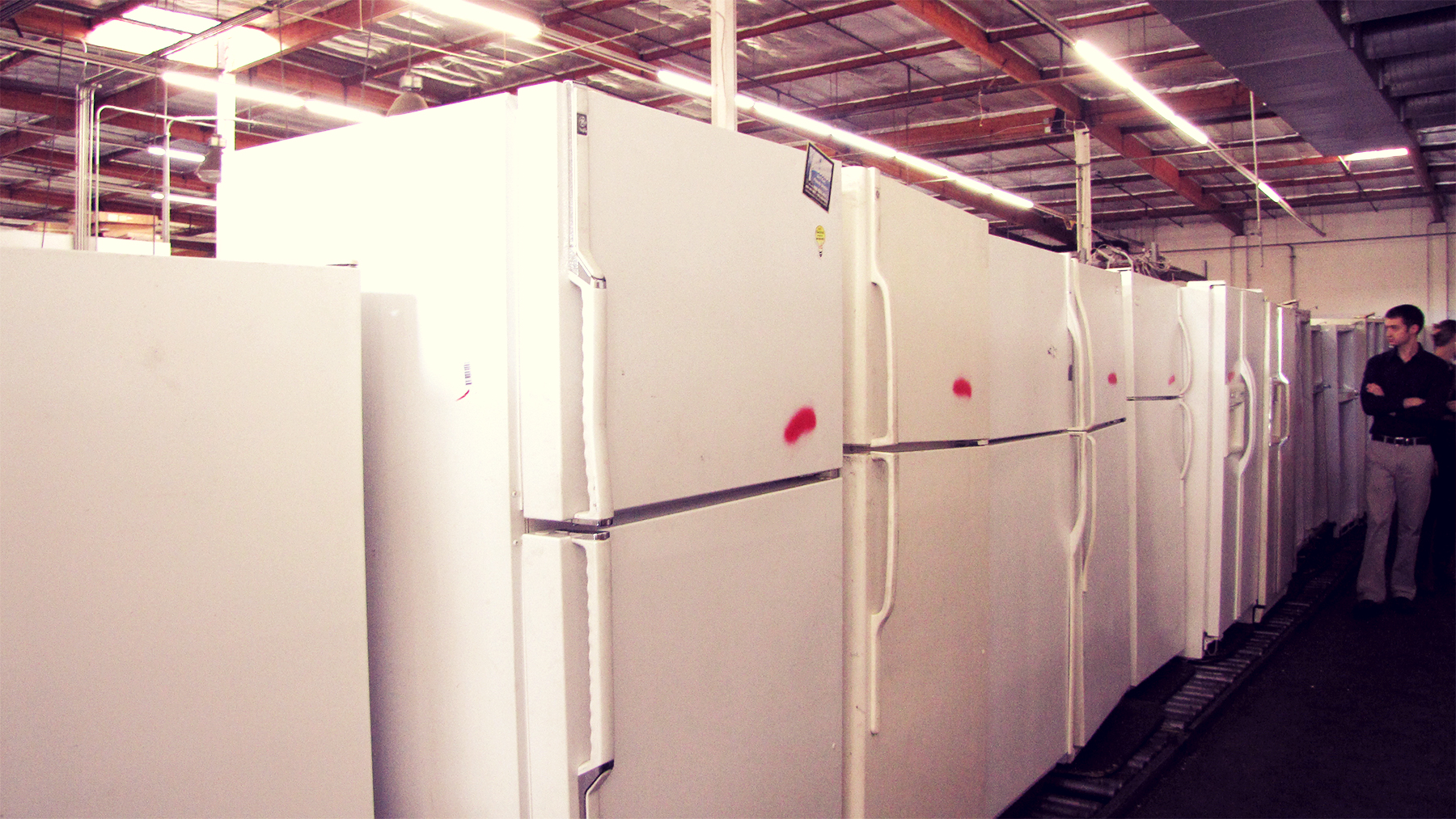The Huffington Post- Green The Blog
Posted:
12/04/2012 1:58 pm
California's
cap-and-trade program incorporates the use of carbon offsets generated from the
destruction of ozone depleting substances (ODS) to help the state meet its
goals for reducing greenhouse gas emissions. While you may not be familiar with
the term ozone depleting substances, chances are that these substances can be
found in your home and business. ODS are used in a wide variety of commercial
and residential refrigerators, air conditioning units, and building insulation.
ODS destroy the
stratospheric ozone layer when released into the atmosphere. In addition to
their potency in burning a hole in the earth's protective ozone layer, certain
ODS are also significant greenhouse gases with high global warming potential
(GWP), meaning they are extremely potent at trapping heat in the atmosphere.
The GWP of ODS can be several hundred to several thousand times more potent than
carbon dioxide.
While many ODS
have been banned from production, they have not been banned from being reused
in older equipment after being reclaimed. Leakage of existing ODS during
reclamation and in older equipment is both a serious climate concern and a
serious threat to the earth's protective ozone layer.
California's
standard -- or protocol -- for ODS offsets provides a rigorous methodology and
a financial incentive for the destruction of ODS gases, specifically certain
chlorofluorocarbons and hydrochlorofluorocarbons. Here are five things you
should know about ODS in California's cap-and-trade program:
- These
gases are not required by law to be destroyed and, therefore, are often
reused.
In 1987, global leaders came together to address the
thinning of the ozone layer in the earth's stratosphere and adopted the Montreal
Protocol on Substances that Deplete the Ozone Layer, an international
treaty that provides a global framework for phasing out the production of
substances responsible for ozone depletion. To date, 197 nations -- almost
every country in the world -- ratified the treaty to reduce and eventually
eliminate the production and use of ODS. The United States ratified the treaty
and incorporated the rapid production phase-out schedule for developed nations.
However, the Montreal Protocol does not require the
destruction of existing stocks of ODS, and so ODS produced prior to phase-out
may legally be recovered, recycled, reclaimed, and reused indefinitely in the
U.S. refrigerant market until they have all leaked into the atmosphere. The
destruction of ODS is not common practice in the U.S. and large quantities of
existing stocks are available in old refrigeration systems, air conditioning
units, building infrastructure and unused stockpiles. Reclaimed ODS are often
reused to service older equipment that have high leak rates; some equipment may
release ODS to the atmosphere at rates of up to 35
percent per year.
- The ODS
protocol specifically excludes newly produced gases.
The California
Compliance Offset Protocol for ODS Projects and the Climate Action Reserve's U.S. ODS Project Protocol, on
which it was based, only issue offset credits for the destruction of existing
stockpiles of gases that are prohibited from new production under the Montreal
Protocol. They specifically exclude gases that are still being produced or that
are not covered by the Montreal Protocol.
In comparison, the UN's Clean Development Mechanism (CDM)
offset program provides credit for the destruction of newly produced HFC-23
gases. This has created a perverse incentive to produce more HCFC-22 gas in order to
destroy the HFC-23 byproduct for credit. HFC-23 is not an ozone-depleting
substance and is not eligible under the California or Reserve ODS protocol.
HCFC-22 coolant also is not eligible under the ODS protocols.
By only allowing ODS that have been phased out of
production, California's offset program is safeguarded from gaming of the
system.
- Only gases
sourced and destroyed in the U.S. at highly regulated and permitted
facilities are eligible.
Under California's cap-and-trade program, the ODS must be
destroyed at U.S. facilities that meet the U.S. EPA's very strict permit and
operating requirements to protect the environment.
Also, California's cap-and-trade program restricts
eligibility to ODS sourced from and destroyed in the U.S. Such a restriction
ensures very strict and efficient quality control, monitoring and verification.
- Strict
documentation requirements are enforced.
The ODS protocol has very strict documentation
requirements to demonstrate full and complete chain of custody of the ODS from
point of origin to destruction (so called "cradle to grave" records).
ODS projects must also provide detailed documentation of data collection,
sample analyses, chemical composition, and operating procedures.
- The
destruction of ozone depleting substances has already achieved significant
emissions reductions.
U.S. ODS projects registered in the Climate Action
Reserve have already achieved nearly
five million metric tons of carbon dioxide equivalent emissions reductions,
the equivalent of taking nearly one million passenger vehicles off the road for
one year. These carbon credits are eligible for conversion to early action
offset credits for use in California's compliance program. So that old
refrigerator you recycled through your local utility or local Sears may be
playing an important role in fighting climate change. ODS chemicals from your
old appliances are recovered in a safe manner at disposal facilities, and
offset programs incentivize the destruction of these chemicals, preventing the
gases from escaping and damaging the environment.

At an appliance recycling center, ODS is captured from old refrigerators for destruction.
Using market incentives for ODS destruction is more efficient and effective than alternatives, such as a mandate. Attempts to mandate destruction of ODS have had limited success because of difficulties in monitoring widely dispersed collection activities and difficulties enforcing penalties for illegal releases. With many millions of refrigerators, buildings, and other equipment containing ODS, monitoring disposal of the refrigerants and foam blowing agents is difficult. By incentivizing their destruction, California is ensuring the permanent removal of these destructive gases from continued leakage, thereby protecting the ozone layer and helping address global climate change.
Click here for the original article : http://www.huffingtonpost.com/gary-gero/five-things-you-should-kn_b_2046367.html

No comments:
Post a Comment
Note: Only a member of this blog may post a comment.